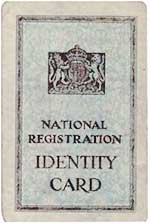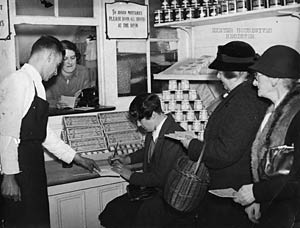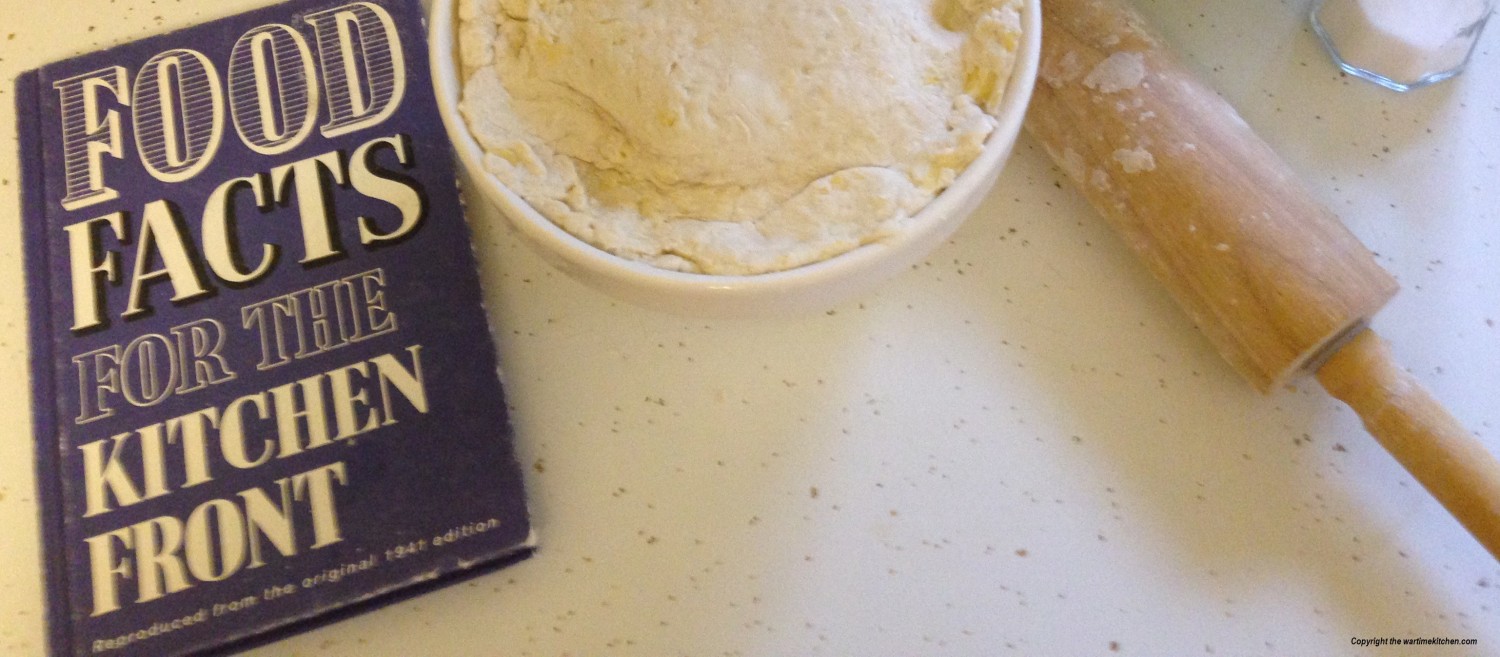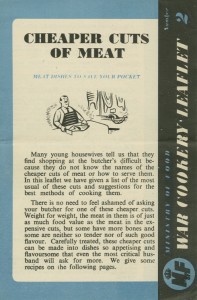The Ministry of Food had to get their message of rationing out to the British public. Another method besides radio, food demonstrations, and film shorts shown in movie theaters, was the War Cookery Leaflet. Various leaflets were published and focused on a particular food, such as cheese, dried eggs, salads, green vegetables, cheaper cuts of meats, and sweets. The leaflets helped readers learn about frugality and healthy eating, while providing hints on food storage and preparation. The leaflets used practical language and the recipes were realistic. They proved to be very popular and successful in the Ministry of Food’s mission of providing useful information and promoting the war effort.
To implement rationing, the British government began issuing Identity Cards through National Registration on September 29, 1939.


All persons had to be registered, and once registered, they would return to their local neighborhood office or village hall to receive their ration books. Ration books came in three colors: tan for adults; green for pregnant or nursing women, and children 4 and under; and blue for children 5 to 16 years old. The ration book color scheme insured that each person got the right amount of food for their age or health condition.
Once the family’s ration books were issued, it was required that the household had to register with their local stores: the butcher for meat and the grocer for general foodstuffs. The shop owners could refuse you, especially if your weren’t inclined to pay your bill on time!

Rationing in Britain began January 8, 1940. Ration books were issued to all persons, young and old alike, so everyone got their “fair share.” Children got extra rations that included additional milk, orange juice, and cod liver oil.



